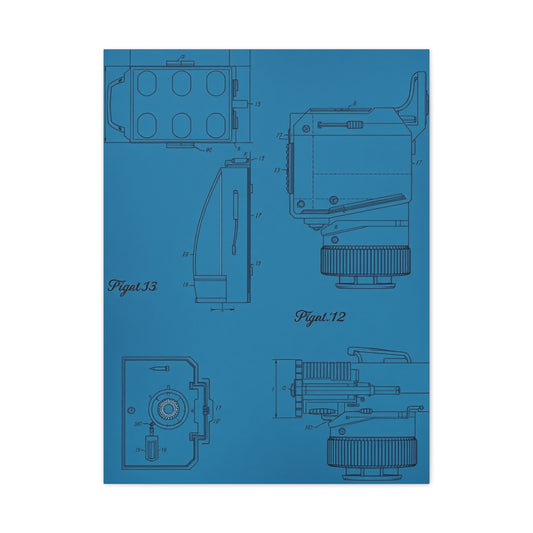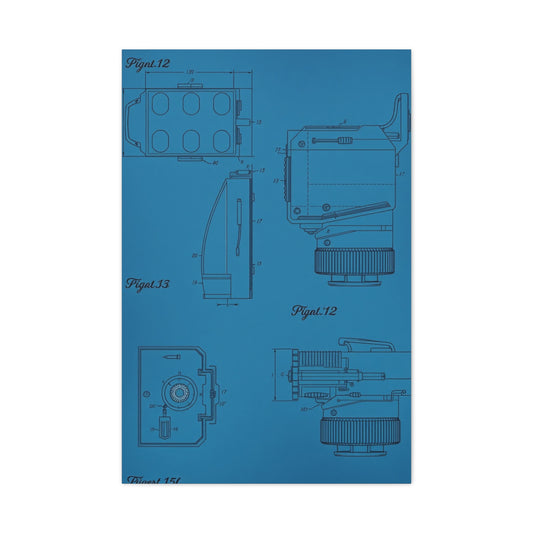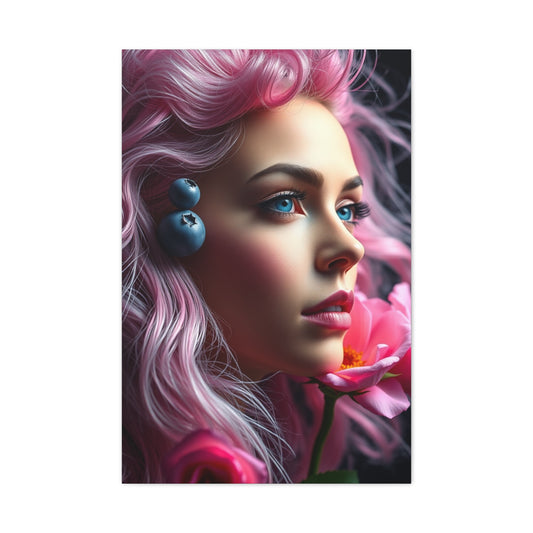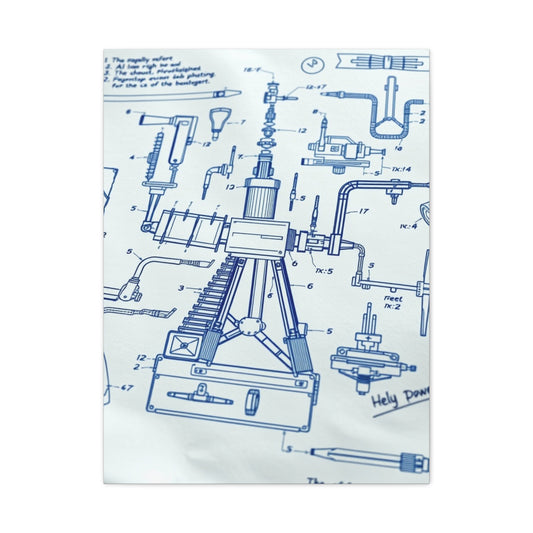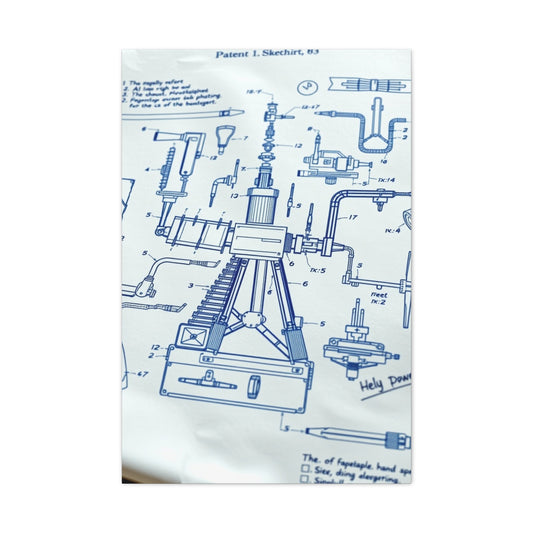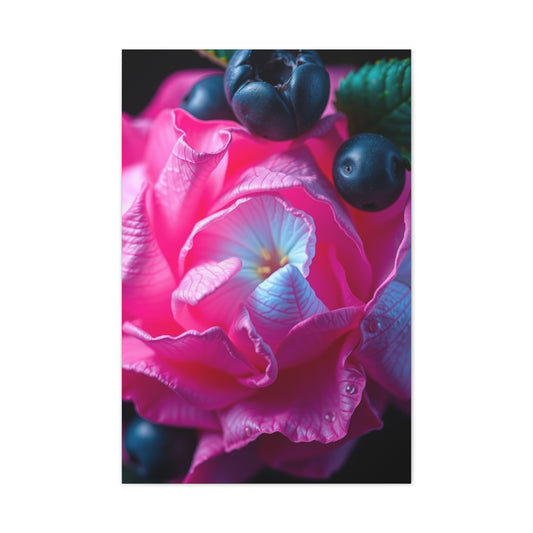As summer winds down, parents, students, and educators often turn their attention to preparing for the upcoming school year. One key aspect of this preparation is updating learning and living spaces in ways that inspire, motivate, and support creativity. Wall art has become an essential element in personalizing these spaces, serving not only as decoration but also as a tool to encourage curiosity, self-expression, and a positive learning environment. From elementary school bedrooms to high school study areas, the right wall art can transform a room into a stimulating, welcoming space that nurtures both academic and personal growth.
When considering wall art for younger children, it’s important to focus on vibrant colors, playful themes, and educational elements. Children at the elementary school level are at a stage where visual stimulation can significantly enhance learning and cognitive development. Brightly colored prints featuring animals, nature, space, and imaginative worlds can engage their attention and spark curiosity. Artwork that includes numbers, letters, shapes, or simple science concepts can combine aesthetics with educational value, making learning a fun and interactive experience. For instance, a colorful world map or a chart of the solar system not only adds visual interest but also encourages children to explore and ask questions about the world around them.
The process of choosing wall art can also become a meaningful activity between parents and children. Allowing children to participate in selecting pieces that appeal to them fosters decision-making skills and gives them a sense of ownership over their personal space. This collaborative approach can also lead to deeper conversations about interests, hobbies, and learning goals. Engaging children in decorating their bedrooms or study areas encourages them to express their personality and can set a positive tone for the school year ahead.
As children grow into pre-teens, their tastes and interests begin to evolve, and wall art can reflect this transitional phase. Middle school is a time when students explore identity, hobbies, and emerging passions. Artwork that highlights sports, music, fashion, or other personal interests can serve as a form of self-expression while still providing a visually stimulating environment. At this stage, it’s helpful to balance personal interests with inspirational elements. Motivational prints, quotes, or abstract art that encourages creativity and resilience can create a supportive atmosphere conducive to both study and relaxation. Choosing pieces that resonate with pre-teens’ changing tastes ensures that their room remains a space where they feel understood and inspired.
For teenagers, wall art can go beyond decoration to become a reflection of their individuality. High school students often develop strong preferences for specific hobbies, pop culture, and creative pursuits, and their personal spaces can become an extension of their identity. Displaying artwork related to favorite movies, music, or fictional characters not only adds character to a room but also helps teens feel a sense of belonging within their interests. At this age, wall art can also serve as a source of inspiration, promoting mindfulness, self-reflection, and motivation during a time when academic and social pressures can be high. Pieces that combine aesthetic appeal with personal significance allow teens to curate an environment that nurtures both creativity and emotional well-being.
Beyond bedrooms, classroom walls provide an important opportunity to create an engaging and interactive learning environment. Teachers can use wall art to cultivate curiosity, encourage exploration, and reinforce key concepts. Educational prints, such as maps, historical timelines, scientific diagrams, and literary quotes, can enhance lessons while making the classroom more visually stimulating. The presence of thoughtfully selected artwork contributes to a positive learning atmosphere, supporting both cognitive and social development. Wall art in classrooms also offers a versatile tool for differentiation, allowing teachers to tailor visuals to different age groups, subjects, and learning styles.
Color choice plays a significant role in shaping the atmosphere of both personal and educational spaces. For younger children, bright and varied colors can stimulate creativity and energy, while older students may benefit from more subdued tones that support focus and reflection. Understanding the psychological impact of color can help in selecting pieces that align with the desired mood of a room. Warm colors like yellows and oranges can promote energy and enthusiasm, while cooler tones such as blues and greens can foster calmness and concentration. By thoughtfully combining color and content, wall art can serve as both a decorative and functional element in any space.
Incorporating interactive elements into wall art can further enhance engagement and learning. For younger children, prints that include puzzles, counting games, or matching activities encourage hands-on participation and playfully reinforce skills. For older students, creative displays such as cork boards, magnetic boards, or chalkboard wall panels allow for dynamic interaction and self-expression. These options make wall art a flexible tool that can evolve with the child’s interests and developmental stage, ensuring that the space remains relevant and inspiring over time.
Another consideration when selecting wall art is the balance between aesthetics and functionality. While it is important to choose pieces that appeal visually, it is equally valuable to consider durability, ease of cleaning, and adaptability. Children's rooms often experience higher levels of activity, so selecting prints that can withstand wear and tear ensures longevity. Similarly, modular or interchangeable wall art allows for frequent updates without the need for major redecorating, which is especially useful as children’s interests shift or as new trends emerge. For classrooms, functional and educational art pieces, such as bulletin boards with movable elements or modular charts, provide both visual interest and practical utility for daily learning activities.
In addition to educational and decorative benefits, wall art contributes to the overall emotional well-being of students. A personalized and thoughtfully arranged space can foster a sense of pride, ownership, and motivation. Children who feel comfortable and inspired in their environment are more likely to engage positively with schoolwork and creative pursuits. Similarly, classrooms that feature vibrant, meaningful, and age-appropriate artwork can support students’ emotional and social development, encouraging collaboration, curiosity, and respect for shared spaces. The visual environment plays a crucial role in shaping attitudes and behaviors, making wall art a subtle yet powerful tool in promoting holistic development.
As the back-to-school season approaches, careful consideration of wall art can provide both practical and emotional benefits for children, teens, and educators alike. By prioritizing color, theme, interactivity, and age-appropriate content, families and schools can create spaces that are not only visually appealing but also supportive of learning, creativity, and personal growth. Selecting the right pieces helps cultivate environments that encourage exploration, self-expression, and inspiration, setting the tone for a productive and enjoyable school year.
Whether for a bedroom or a classroom, wall art serves as a bridge between aesthetics and function. Its versatility allows it to adapt to various stages of childhood, pre-teen exploration, and teenage identity formation, as well as the diverse educational needs of students. By thoughtfully integrating artwork into these spaces, families and educators can create environments that nurture curiosity, support learning objectives, and foster a love of creativity that extends far beyond the school year.
Designing walls for elementary and pre-teen spaces requires a careful blend of aesthetics, developmental considerations, and personal interests. These formative years are crucial for cultivating curiosity, self-expression, and cognitive growth. Wall art in children’s bedrooms and study areas can serve as both a decorative element and a tool for learning and inspiration. Selecting the right pieces at this stage helps foster a positive environment that supports creativity and encourages children to explore new ideas.
For elementary school-aged children, visual stimulation is key. Bright, colorful artwork captures attention and stimulates imagination. Themes such as animals, plants, space, transportation, and fantastical worlds can transport young minds to exciting, exploratory spaces. Illustrations that feature bold shapes, playful patterns, and vibrant hues not only add charm to a room but also enhance cognitive development. Children at this age are learning to recognize colors, shapes, and symbols, and wall art that incorporates these elements can reinforce early learning subtly and enjoyably.
Educational content can be seamlessly incorporated into wall art for younger children. Maps, alphabet charts, number charts, and science diagrams are examples of pieces that encourage learning while still being visually appealing. A wall featuring a colorful world map can spark curiosity about geography, cultures, and languages. Similarly, artwork depicting the solar system, planets, and constellations can nurture an early interest in science and astronomy. Integrating learning into décor allows children to engage with educational content outside of structured lessons, making knowledge acquisition feel like a natural part of everyday life.
Playfulness is another important aspect of elementary-age wall art. Children thrive in environments that balance structure with imagination. Prints featuring whimsical animals, imaginative landscapes, or cartoon-like characters can spark storytelling, role-playing, and creative thinking. Incorporating interactive elements, such as magnetic boards, chalkboard panels, or wall decals that children can rearrange, encourages active participation and allows them to make the space their own. This interactivity also reinforces fine motor skills and problem-solving abilities while giving children a sense of ownership over their environment.
While aesthetics and education are important, durability and adaptability should also be considered. Children’s rooms often experience high levels of activity, so selecting pieces that are sturdy and easy to clean ensures they remain intact over time. Lightweight frames, canvas prints, and adhesive-backed wall art provide flexibility and make it simple to swap or update artwork as children’s interests evolve. This adaptability is especially valuable as kids grow and develop new hobbies or tastes, ensuring their space remains relevant and engaging throughout the elementary years.
Transitioning into pre-teen years, children begin to explore identity, hobbies, and personal interests more deeply. Wall art for middle school students should reflect this shift, combining visual appeal with opportunities for self-expression. Sports, music, fashion, nature, and artistic pursuits are common areas of interest at this stage, and incorporating these themes into room décor can create an environment that resonates with pre-teens’ evolving identities. Choosing pieces that align with their passions not only personalizes their space but also encourages continued exploration of these interests.
In addition to hobbies, inspirational and motivational artwork can play a significant role for pre-teens. Quotes, affirmations, and abstract designs that encourage creativity, perseverance, and self-confidence help cultivate a positive mindset. Middle school students often face new social and academic challenges, and a supportive environment can help them navigate these experiences. By surrounding themselves with art that reflects their aspirations and values, pre-teens gain subtle reinforcement of self-esteem, goal-setting, and personal growth.
Color continues to play a vital role in pre-teen spaces. While bright, primary colors are ideal for younger children, pre-teens may prefer more nuanced tones that reflect their growing sophistication and changing tastes. Pastels, muted shades, and complementary color schemes can create a balanced, inviting environment while still maintaining energy and vibrancy. The psychological impact of color remains significant: blues and greens can foster calm and concentration, while warmer tones such as yellows and oranges promote energy and enthusiasm. Careful consideration of color can enhance both the aesthetic appeal and the functional quality of a room.
|
Related Catagories: |
The integration of personal interests into wall art is particularly important for pre-teens seeking individuality. Posters, prints, and framed artwork featuring favorite sports teams, musical artists, or hobbies allow them to assert their identity and showcase their preferences. This personalization helps establish a sense of autonomy and pride in their living space. Additionally, interactive wall décor, such as pinboards or magnetic displays, enables pre-teens to regularly update and curate their space, reinforcing ownership and responsibility.
Educational considerations are still relevant for pre-teens, particularly in areas such as reading, mathematics, and science. Artwork that incorporates educational themes can reinforce learning in a fun and visually engaging manner. For instance, infographics on science concepts, visual representations of historical events, or inspirational art featuring famous authors and thinkers can bridge the gap between educational content and room aesthetics. Balancing personal expression with educational elements ensures that the environment remains both stimulating and purposeful.
Another important aspect of pre-teen wall décor is fostering creativity and imagination. Pre-teens often develop hobbies that involve making, building, or designing. Wall art that encourages these creative pursuits—such as blank canvases, DIY-friendly murals, or abstract patterns—can inspire experimentation and problem-solving. Creating designated spaces for drawing, painting, or crafting within the room allows children to actively engage with their environment rather than passively observe it. By incorporating hands-on elements into wall design, parents and educators can nurture a sense of agency and innovative thinking.
Organizing wall art to complement a functional living or study space is also critical. As children progress through school, they require areas for homework, reading, and focused activities. Art placement should consider these functional zones, enhancing the visual appeal without causing distraction. For example, motivational or educational pieces can be positioned near study desks to reinforce learning objectives, while playful and imaginative prints can decorate leisure areas. Thoughtful arrangement ensures that the room is cohesive, supportive, and conducive to both work and relaxation.
Durability, flexibility, and ease of updating remain important considerations as pre-teens’ interests can shift rapidly. Modular wall art, frames that allow for quick swapping of prints, and peel-and-stick decals provide practical solutions for keeping the room fresh and aligned with changing tastes. This adaptability reduces the need for frequent renovations while giving children the freedom to curate their personal space. In essence, wall art becomes a living, evolving part of their environment, reflecting both their current passions and their journey of self-discovery.
Parental involvement in selecting and arranging wall art continues to be beneficial during the pre-teen years. Collaborative discussions about themes, colors, and placement can strengthen communication, foster mutual understanding, and provide guidance without limiting autonomy. Allowing pre-teens to contribute meaningfully to these decisions helps build confidence, encourages responsibility, and promotes a sense of ownership over their living space. This process also serves as an opportunity for parents to introduce concepts such as balance, design principles, and the psychological impact of environmental aesthetics.
In addition to personal spaces, pre-teen wall art can be relevant in communal areas or shared study spaces. Artwork that encourages collaboration, creativity, and learning can enrich group environments and foster a positive atmosphere. For instance, a shared homework area with visually stimulating, educational prints can create an engaging, inspiring environment that motivates children to focus and explore together. Thoughtful integration of wall art into communal spaces helps support both individual growth and collaborative learning experiences.
Ultimately, selecting wall art for elementary and pre-teen children is about balancing visual appeal, educational value, and opportunities for self-expression. By considering developmental stages, personal interests, and environmental factors, parents and educators can create spaces that nurture creativity, motivation, and emotional well-being. Art becomes more than decoration; it becomes a catalyst for exploration, learning, and personal growth. A well-curated environment provides children with a sense of stability, autonomy, and inspiration as they navigate the challenges and opportunities of each school year.
As students enter high school, their personal tastes, hobbies, and academic responsibilities begin to take on greater significance. Bedrooms and study spaces are no longer simply places for rest—they evolve into personal sanctuaries, creative hubs, and functional study areas. Wall art plays an increasingly important role during this stage, serving both as a means of self-expression and as a tool to create a balanced environment that encourages focus, creativity, and emotional well-being. Selecting appropriate wall art for high school students requires consideration of identity, interests, room function, and aesthetics, ensuring that the space is both inspiring and practical.
High school students often develop strong affinities for specific hobbies, pop culture, and artistic pursuits. Artwork that reflects these interests can help teens establish a sense of identity and ownership over their living space. For example, posters or framed prints featuring favorite movies, television shows, books, or musical artists allow students to showcase their passions. Displaying artwork related to hobbies such as sports, photography, gaming, or visual arts further personalizes a room, making it a space where teens feel fully themselves. This personalization contributes to self-confidence, fosters creativity, and provides a source of comfort and motivation during the often stressful high school years.
Thematic wall art is particularly effective in encouraging self-expression among high school students. Popular themes include abstract designs, inspirational quotes, landscapes, and character-driven artwork. Abstract pieces can stimulate creativity and provide visual intrigue, while quotes and affirmations reinforce positive thinking and resilience. Teenagers are at a stage where developing self-awareness and personal values is critical, and artwork can subtly support this process. Carefully chosen pieces can remind students of their goals, passions, and aspirations, creating an environment that nurtures both personal growth and academic motivation.
Color choices continue to play a vital role in teen spaces, but preferences often become more nuanced. While younger children may gravitate toward bright and bold colors, high school students may prefer a combination of muted tones, complementary palettes, or accent colors that enhance mood and concentration. Warm tones like oranges and yellows can energize a room, making it suitable for social interaction or creative activities, while cooler shades such as blues and greens promote calmness and focus, making them ideal for study areas. Combining colors strategically can help create a space that balances stimulation with tranquility, supporting both relaxation and productivity.
Functionality is a crucial consideration for high school wall art. Bedrooms often serve multiple purposes: they are places for sleep, relaxation, studying, and pursuing creative hobbies. Wall art should complement these activities without creating a distraction or clutter. Organizing artwork to define functional zones within a room can help establish clear areas for studying, reading, or creative expression. For instance, motivational prints or educational posters can be positioned near study desks to reinforce concentration, while more expressive or decorative pieces can enhance relaxation zones. Strategic placement ensures that the room is visually engaging while maintaining an environment conducive to both learning and leisure.
Teenagers often enjoy interactive and customizable wall art that allows them to update or rearrange their space according to changing interests. Magnetic boards, pinboards, modular frames, and peel-and-stick decals provide opportunities for ongoing personalization. These flexible options let students display photos, drawings, or temporary artwork without committing to permanent installations. By giving high schoolers the freedom to curate their environment, these interactive elements foster autonomy, creativity, and responsibility, while maintaining a visually dynamic and organized space.
Artistic self-expression also extends to DIY projects and personalized artwork. Many teens enjoy creating their own prints, paintings, or collages, which can then be incorporated into their wall décor. Allowing students to display their own work not only provides a sense of accomplishment but also encourages experimentation, critical thinking, and creative problem-solving. Encouraging personal creation alongside curated pieces can transform a room into a vibrant gallery that evolves with the teen’s interests and skills.
Educational considerations remain relevant for high school students, though in a more nuanced form than in earlier years. Posters or prints that relate to academic subjects, such as literature, history, science, or mathematics, can serve as both inspiration and reference. For instance, a visually appealing periodic table, a historical timeline, or a literary quote from a favorite author can integrate learning into the environment in a subtle, visually appealing way. These educational pieces complement personal expression while supporting academic goals, creating a well-rounded, functional space.
Motivational and inspirational wall art takes on particular importance during the high school years, as students encounter increased academic and social challenges. Art featuring affirmations, goal-setting prompts, or images that evoke resilience and determination can positively influence mindset and behavior. Surrounding oneself with uplifting and aspirational visuals encourages perseverance, focus, and self-reflection. Incorporating artwork that emphasizes growth, effort, and creativity helps teens navigate the pressures of high school while fostering emotional intelligence and confidence.
For students with a passion for pop culture or media, character-driven artwork can be a source of inspiration and enjoyment. Artwork featuring fictional characters from literature, comics, or movies provides opportunities for storytelling and imaginative exploration. Teens may use these visual cues as a way to engage with creative narratives, explore ethical questions, or express identity. Additionally, visually striking designs from favorite franchises or artistic interpretations of media characters can energize a room, providing both aesthetic appeal and emotional resonance.
Organization and cohesion are essential for high school spaces that serve multiple purposes. Carefully curating the size, style, and placement of artwork can prevent visual clutter and maintain a sense of order. Larger focal pieces may be used to anchor a room, while smaller prints and decorative elements can complement the primary artwork without overwhelming the space. Consistency in color schemes, thematic elements, or framing styles helps create a cohesive environment that is visually appealing and emotionally supportive. A well-organized space promotes productivity, creativity, and relaxation, ensuring that teens can fully engage with all aspects of their room’s function.
Interactive elements such as chalkboards, corkboards, or modular wall displays can further enhance the versatility of high school spaces. These elements allow students to track goals, display personal achievements, or update their environment with seasonal or project-based artwork. By providing opportunities for both functional and aesthetic engagement, these interactive features reinforce responsibility, autonomy, and creative thinking. Teens are encouraged to actively shape their space, cultivating a sense of pride and ownership that contributes to long-term satisfaction and motivation.
Social and emotional considerations are also key when selecting wall art for high school students. Personal spaces should foster comfort, confidence, and self-reflection, while supporting social interactions with friends or family. Artwork that aligns with a teen’s identity, values, and interests can help establish a sense of belonging and self-assurance. Creating a space that is visually and emotionally supportive allows students to recharge, reflect, and engage meaningfully with both academic and social activities. Wall art becomes a subtle yet powerful tool for emotional regulation and self-expression during this critical developmental stage.
Incorporating a balance of educational, inspirational, and personal-themed artwork ensures that high school students have an environment that supports multiple facets of development. While personal expression is central, thoughtful integration of pieces that encourage reflection, creativity, and learning enhances the room’s functionality and emotional impact. Teens can experiment with layering themes, combining different art styles, and rotating displays to keep the space dynamic and aligned with their evolving interests. This flexible approach supports autonomy, creativity, and intellectual engagement, all of which are critical for high school success.
Durability and adaptability remain practical considerations for high school wall art. Lightweight frames, canvas prints, and adhesive-backed artwork provide longevity and flexibility, while ensuring that the space can be easily updated to reflect changing tastes or interests. High school students benefit from environments that can evolve alongside them, offering opportunities to experiment with new aesthetics, themes, or creative arrangements. Adaptable wall art supports personal growth and helps maintain a visually stimulating environment without requiring major renovations.
Overall, high school wall art should prioritize self-expression, functionality, and emotional support. By carefully considering themes, colors, placement, and interactivity, parents and students can create a space that balances creativity, inspiration, and productivity. Artwork becomes more than decoration—it becomes a tool for identity exploration, personal growth, and learning. Well-curated wall art encourages motivation, emotional regulation, and creative thinking, providing a foundation for academic success and personal development.
Ultimately, the goal is to create a space that reflects the teen’s individuality while supporting the demands of high school life. Artwork that is visually appealing, personally meaningful, and thoughtfully arranged helps transform a bedroom or study area into a sanctuary that fosters creativity, motivation, and confidence. By integrating self-expression, educational elements, and functional design, wall art contributes to a high school environment that inspires both personal and academic achievement.
As the school year begins, creating a visually engaging and stimulating environment in both personal and educational spaces can have a profound impact on motivation, learning, and creativity. Beyond individual bedrooms, classrooms offer unique opportunities for integrating wall art in ways that enhance education, support social-emotional development, and foster a sense of community. Thoughtful wall décor in classrooms, coupled with versatile strategies for home and teen spaces, ensures that students at every grade level begin the year inspired and engaged.
Classroom Wall Art: Creating an Inspiring Learning Environment
Teachers have a unique opportunity to shape the learning atmosphere through visual design. Classroom walls, when thoughtfully curated, can communicate expectations, celebrate achievements, and inspire curiosity. From early childhood classrooms to high school lecture halls, selecting the right artwork can support educational objectives and promote a positive, interactive atmosphere.
For younger students, visual engagement is critical. Colorful, bold prints featuring animals, shapes, numbers, letters, and nature scenes can stimulate curiosity and encourage active participation. Educational posters serve a dual purpose, combining decoration with learning reinforcement. For example, maps of the world, illustrated alphabets, or science-themed charts can become interactive tools during lessons, encouraging students to engage with content outside of traditional instruction. Large visuals also help children who are developing reading and observational skills, offering accessible cues for memory and comprehension.
As students progress to middle and high school, classroom wall art can shift to accommodate more complex themes and learning objectives. Historical timelines, scientific diagrams, literary references, and abstract or motivational artwork can support both intellectual engagement and personal growth. Well-chosen art helps contextualize lessons, fosters inquiry, and makes abstract concepts tangible. Additionally, wall décor that encourages discussion and interpretation can promote critical thinking, collaborative problem-solving, and creativity. By incorporating visual elements that stimulate curiosity and conversation, teachers can create environments that are both educationally rich and aesthetically engaging.
Color psychology plays a crucial role in classroom design. Bright, warm colors can energize young learners and create an atmosphere of excitement and exploration. Cooler tones, such as blues and greens, can enhance concentration and provide a calming effect, making them ideal for older students who require focus for independent work or collaborative projects. Neutral backgrounds with strategic pops of color can also balance stimulation with clarity, ensuring that walls enhance learning rather than distract from it. Understanding the interplay between color, mood, and cognitive engagement allows teachers to curate walls that support both creativity and academic performance.
In addition to traditional educational posters, incorporating interactive elements into classroom walls can greatly enhance engagement. Bulletin boards, magnetic boards, and rotating displays provide opportunities for students to participate actively in their learning environment. These interactive features allow teachers to present evolving content, highlight student achievements, and encourage collaboration. For example, a rotating project board showcasing student artwork, research projects, or creative writing pieces not only adds variety to the room but also fosters pride, ownership, and motivation among students. Interactive wall art transforms classrooms into dynamic learning hubs, bridging the gap between visual appeal and educational function.
Universal Wall Art Tips for All Grade Levels
While each age group has unique needs, several overarching principles apply when selecting and arranging wall art across classrooms and personal spaces. First, consider purpose and function. Each piece of artwork should serve a role—whether it’s to inspire, educate, or stimulate creativity. Art without purpose can create visual clutter, whereas intentional placement can enhance the environment and support specific goals.
Second, balance aesthetics with accessibility. Artwork should be visually engaging without overwhelming the space or impeding functionality. Large focal pieces can anchor a room, while smaller supporting prints can complement the overall design. In classrooms, arranging art at eye level for the intended audience ensures engagement and allows students to interact with visuals comfortably. In personal bedrooms or study spaces, grouping pieces by theme, color, or size can create cohesion while reflecting individuality. A strategic arrangement allows each piece to contribute to the overall harmony of the space.
Flexibility and adaptability are also essential considerations. Children and teens often experience rapid shifts in interests, and classrooms may require updates to reflect curriculum changes. Choosing art that can be easily updated or rearranged ensures that spaces remain fresh, relevant, and engaging. Peel-and-stick decals, modular frames, and magnetic boards are practical solutions for maintaining adaptability while supporting creativity. For personal spaces, this flexibility empowers students to curate their environment according to evolving tastes, hobbies, and academic needs.
Encouraging personalization is a critical principle for both home and classroom spaces. Personalization fosters ownership, engagement, and emotional connection to the environment. In bedrooms, allowing students to choose artwork based on their hobbies, favorite media, or artistic pursuits encourages self-expression and creativity. In classrooms, incorporating student work, rotating project displays, and student-selected visuals reinforces a sense of community and shared responsibility. Personalized walls contribute to motivation, self-esteem, and pride, creating an environment where students feel seen, valued, and inspired.
In addition to personalization, thematic cohesion enhances visual impact and cognitive engagement. Establishing a central theme for a room or a specific wall helps tie together diverse pieces of art and prevents visual chaos. For example, a science-themed classroom may combine posters of planets, biology diagrams, and inspirational quotes from notable scientists. A teen bedroom focused on personal passions could feature a combination of abstract art, media-inspired prints, and DIY creative projects. Cohesive themes provide structure and context while still allowing room for individuality and creativity.
Practical considerations, such as durability and maintenance, should not be overlooked. Especially in classrooms and younger children’s rooms, artwork is subject to frequent handling, accidental damage, and environmental wear. Selecting materials that are sturdy, easy to clean, and resilient ensures that wall art remains visually appealing and functional over time. Laminated posters, canvas prints, and lightweight frames offer longevity without compromising aesthetic quality. Easy-to-maintain materials are especially valuable in classrooms, where multiple students interact with the space daily.
Another universal tip is to integrate motivational and inspirational elements across grade levels. Artwork that encourages perseverance, creativity, curiosity, and critical thinking benefits students of all ages. For younger children, motivational visuals can be simple and playful, featuring affirmations or positive messages. For older students, more sophisticated quotes, abstract visuals, or conceptual artwork can encourage reflection, goal-setting, and intellectual engagement. Motivational wall art subtly reinforces positive habits, self-confidence, and emotional resilience, contributing to both academic and personal development.
Interactive and dynamic elements are particularly effective across settings. In classrooms, rotating displays, student-contributed artwork, and modular bulletin boards foster a sense of participation and pride. At home, interchangeable prints, magnetic boards, and cork panels allow children and teens to engage actively with their environment. These options support creativity, problem-solving, and adaptability while promoting responsibility and personal agency. Students who can update and curate their space regularly are more likely to feel invested in their learning and personal development.
Spatial planning is also essential when arranging wall art. In classrooms, artwork should complement furniture layouts and traffic flow, ensuring that walls enhance learning without obstructing visibility or accessibility. In personal spaces, grouping pieces strategically around functional areas, such as desks, reading nooks, or relaxation zones, ensures that the environment remains balanced and purposeful. Thoughtful placement allows art to contribute meaningfully to both the aesthetic and functional qualities of the space.
In addition to traditional prints, integrating educational technology into walls can create unique, hybrid learning environments. Interactive charts, QR-code-linked displays, and digital art panels allow students to engage with content in innovative ways. These options combine visual appeal with dynamic functionality, providing opportunities for multimedia learning experiences. While physical wall art remains invaluable, incorporating technology where appropriate can enhance engagement and create multi-sensory learning environments.
Community-building is another valuable consideration, particularly in classroom settings. Displaying artwork that reflects shared experiences, collaborative projects, or school values helps foster inclusivity, teamwork, and a sense of belonging. Celebrating diversity through culturally inclusive visuals and student contributions can strengthen community bonds and promote empathy. Walls become a medium for communication, collaboration, and collective identity, supporting both social-emotional and academic development.
The versatility of wall art allows it to serve multiple functions simultaneously. It can educate, inspire, and personalize a space while also supporting organization, reflection, and engagement. By carefully considering the audience, purpose, and context, both educators and families can curate spaces that are visually stimulating, emotionally supportive, and conducive to learning. Wall art becomes a dynamic tool that adapts to evolving needs, reflects individuality, and enhances the overall environment.
For families preparing for back-to-school transitions, wall art offers opportunities to set a positive tone for the year ahead. Engaging children in the selection process encourages ownership, self-expression, and meaningful conversations about values, goals, and interests. Choosing age-appropriate, visually stimulating, and thematically relevant pieces helps create spaces that balance creativity, functionality, and personal identity. Personalized and adaptable wall décor supports both learning and emotional development, laying the foundation for a productive and fulfilling school year.
For educators, thoughtful classroom wall art enhances the learning environment, supports instructional goals, and fosters a sense of community. By incorporating educational visuals, motivational messages, and interactive elements, teachers can create immersive spaces that encourage exploration, creativity, and collaboration. Flexibility and adaptability ensure that walls remain relevant throughout the school year, responding to curriculum shifts, student needs, and evolving interests. Engaging students in the curation process further reinforces ownership, pride, and investment in the classroom environment.
Across all grade levels, combining aesthetics, functionality, and personal relevance ensures that wall art contributes meaningfully to student development. Considerations such as color, theme, interactivity, durability, and placement allow spaces to be both visually engaging and supportive of learning objectives. Whether decorating a bedroom, a study space, or a classroom, wall art serves as a versatile and impactful tool for enhancing creativity, motivation, and engagement.
Ultimately, back-to-school wall art is more than decoration—it is an instrument for shaping experiences, encouraging curiosity, and fostering personal and intellectual growth. When thoughtfully selected and strategically arranged, wall art transforms spaces into inspiring, functional, and supportive environments for students of all ages. From colorful educational prints for young learners to identity-affirming displays for teens, and motivational, interactive installations for classrooms, the right wall art creates spaces that are as dynamic and evolving as the students who inhabit them.
Wall art is a powerful tool for shaping environments that inspire learning, creativity, and self-expression. Beyond aesthetics, carefully chosen artwork contributes to focus, organization, and emotional well-being, making it an essential element for both home and classroom spaces. For students across all grade levels, wall décor offers a unique opportunity to personalize spaces while promoting engagement and cognitive development. By strategically selecting and arranging artwork, families and educators can transform bedrooms, study areas, and classrooms into dynamic spaces that foster curiosity, motivation, and personal growth.
Fostering Creativity in Personal Spaces
Personal creativity flourishes in environments that balance stimulation with organization. Bedrooms and study areas are primary spaces where students interact with their interests, hobbies, and academic responsibilities. Integrating wall art that aligns with these activities enhances motivation and provides subtle cues for creative exploration. For elementary school students, vibrant colors, playful shapes, and imaginative themes encourage experimentation and storytelling. Artwork featuring animals, fantasy worlds, space, and nature sparks curiosity and invites children to engage with their environment through play and exploration.
Pre-teens benefit from wall art that reflects emerging personal interests and encourages independent thinking. Incorporating visuals tied to hobbies such as music, sports, fashion, or nature supports identity development and self-expression. Motivational artwork, abstract patterns, and interactive displays can inspire problem-solving, creative thinking, and goal-setting. By allowing pre-teens to curate and rearrange their wall décor, they gain a sense of ownership over their space, reinforcing autonomy and fostering creative confidence.
High school students often seek spaces that balance individuality with functionality. Wall art can serve as both personal expression and intellectual stimulation. Posters, framed prints, and canvas artwork related to favorite media, hobbies, or inspirational themes provide a visually engaging backdrop that supports emotional and cognitive development. Abstract designs, quotes, and media-inspired visuals encourage reflection, creativity, and self-awareness. Including interactive elements, such as cork boards, modular displays, or personal artwork, allows teens to continually adapt their environment, nurturing innovation and personal growth.
Promoting Organization Through Visual Cues
Wall art can also contribute to organization and productivity. Strategically placed visuals can delineate functional zones, define study areas, and reinforce routines. For example, in a teenager’s bedroom, grouping artwork around a desk or homework station can create a dedicated focus area, while more decorative pieces enhance relaxation or creative zones. Younger students can benefit from visual cues such as labeled charts, schedules, or educational prints that subtly guide daily routines. By integrating organization into wall design, students learn to manage their environment, which supports time management, responsibility, and effective study habits.
Classrooms offer similar opportunities for using wall art to promote organization and structure. Educational posters, instructional visuals, and interactive boards provide reference points for lessons, reinforcing concepts and routines. Color-coded charts, diagrams, and themed displays can guide students through processes or group activities, helping them navigate the learning environment with confidence. Visual organization reduces cognitive load and allows students to focus on content rather than struggling to interpret or locate resources. Thoughtful placement and categorization of wall art in classrooms can transform walls into functional tools that enhance both learning and engagement.
Incorporating Educational and Motivational Elements
For younger students, combining educational content with visual appeal strengthens early learning. Alphabet charts, number sequences, shapes, maps, and science illustrations can reinforce classroom instruction and support home-based learning. These pieces offer repeated exposure to foundational concepts, creating subtle learning opportunities throughout the day. Interactive elements, such as movable decals or puzzle-based prints, encourage active engagement, which supports cognitive development and fine motor skills.
Pre-teens and high school students benefit from a mix of motivational and educational wall art. Inspirational quotes, goal-tracking charts, and academic-themed visuals can reinforce perseverance, responsibility, and intellectual curiosity. Motivational artwork supports emotional resilience, encourages self-reflection, and fosters a growth mindset, all of which are crucial during periods of academic and social transition. By thoughtfully integrating both educational and motivational elements, wall art contributes to an environment that nurtures holistic development, combining intellectual, creative, and emotional growth.
Balancing Visual Appeal and Functionality
Achieving a balance between aesthetics and functionality is key to successful wall design. Overly cluttered spaces can be distracting, while minimal or sterile environments may fail to inspire. The ideal approach combines carefully selected pieces that support creativity, learning, and self-expression without overwhelming the viewer. Large, bold focal points can anchor a room, while smaller supporting visuals complement the primary pieces. Consistency in color schemes, themes, or framing style enhances cohesion and promotes a sense of order.
Flexibility in wall art selection further supports balance. Peel-and-stick decals, modular frames, and interchangeable prints allow for regular updates without requiring major renovations. Interactive elements such as magnetic boards, cork panels, and DIY-friendly surfaces encourage students to actively participate in arranging their environment. This dynamic approach ensures that wall décor evolves alongside the student, maintaining relevance and engagement over time.
|
Related Catagories: |
Tailoring Wall Art to Developmental Stages
Consideration of developmental stages is essential when designing spaces with wall art. Younger children benefit from highly visual, interactive, and playful artwork that encourages exploration and cognitive growth. Bright colors, bold patterns, and imaginative themes help build visual literacy and stimulate curiosity. Educational elements can be subtly incorporated to enhance learning while maintaining enjoyment.
Pre-teens require artwork that balances self-expression with developmental support. Themes reflecting personal interests, hobbies, and emerging identity provide opportunities for creativity and autonomy. Motivational visuals encourage resilience, goal-setting, and confidence. Interactive elements such as modular displays or writable surfaces allow for ongoing personalization and engagement, reinforcing both ownership and responsibility.
High school students need spaces that support both personal expression and functional engagement. Wall art that reflects individuality, interests, and inspiration enhances emotional well-being and encourages creative thinking. Abstract visuals, motivational quotes, and media-inspired artwork stimulate reflection and self-awareness. Flexibility remains crucial, allowing students to adapt their space as their interests and priorities evolve. Interactive and dynamic elements help maintain engagement, organization, and personal investment in the environment.
Creating Cohesion Across Multiple Spaces
When considering multiple environments, such as bedrooms, study areas, and classrooms, cohesion is important. While each space may serve distinct purposes, consistent themes, color palettes, or design principles can create visual harmony. In home settings, a consistent color scheme or complementary themes across rooms can tie the space together while allowing each room to reflect personal interests. In classrooms, cohesive design enhances focus, reduces visual clutter, and reinforces the learning environment’s identity. Consistency does not preclude personalization; individual pieces can reflect unique student contributions, interests, and achievements while maintaining overall cohesion.
Encouraging Interaction and Engagement
Interactivity is a powerful tool for engagement across age groups. Elementary students benefit from hands-on elements such as movable decals, matching games, or puzzle-based prints that encourage tactile interaction. Pre-teens and high school students gain value from dynamic displays, such as cork boards, magnetic panels, or modular frames, that allow them to rotate artwork, display personal creations, or track goals. In classrooms, interactive bulletin boards, rotating project displays, and collaborative art projects create participatory environments that foster pride, community, and motivation.
Interactive and personalized wall art encourages agency, responsibility, and active participation in shaping the environment. By engaging students in the curation process, both at home and in the classroom, wall art becomes a tool for developing critical thinking, problem-solving, and organizational skills. Students are empowered to make meaningful decisions about their space, reinforcing autonomy, confidence, and creativity.
Integrating Technology and Modern Visual Elements
Technology can complement traditional wall art to create multi-dimensional environments. Digital displays, QR-code-linked visuals, and interactive panels provide opportunities for multimedia engagement. These options allow students to access dynamic content, link artwork to lessons, or integrate digital portfolios alongside physical displays. While traditional prints, paintings, and decals remain central, integrating technology can enhance interactivity, engagement, and accessibility, providing a richer and more adaptable learning environment.
Supporting Emotional and Social Well-Being
Wall art also contributes to emotional and social development. Personalized, age-appropriate, and meaningful visuals foster a sense of comfort, identity, and pride. In bedrooms and personal study areas, wall art that reflects hobbies, achievements, or inspirational messages supports self-esteem, resilience, and motivation. In classrooms, inclusive and culturally responsive visuals promote empathy, collaboration, and community. Celebrating diversity and student contributions through wall art encourages a positive social climate and reinforces a sense of belonging.
Practical Tips for Selecting and Arranging Wall Art
When selecting wall art for back-to-school spaces, consider several practical factors. First, ensure that the content aligns with the student’s age, interests, and developmental stage. Second, balance size, color, and placement to create harmony without overcrowding the space. Third, consider durability, ease of maintenance, and flexibility to accommodate changing preferences or curriculum needs. Fourth, integrate interactive and educational elements where appropriate to enhance engagement and learning. Finally, involve students in the selection and arrangement process to foster ownership, autonomy, and creativity.
Placement strategies also enhance the impact of wall art. Anchor larger focal pieces near study areas or relaxation zones to create visual interest. Group smaller prints in thematic clusters to provide cohesion and rhythm across walls. Consider eye level, sightlines, and functionality to ensure that art is both accessible and supportive of the intended activities. Rotating displays or modular arrangements allow for seasonal updates, curriculum alignment, or shifts in personal interests, maintaining relevance and engagement over time.
As the school year begins, creating inspiring, functional, and visually appealing environments is essential for students of all ages. Wall art is an accessible and versatile tool that contributes to creativity, learning, and personal development. From elementary school bedrooms to high school study areas and classrooms, carefully chosen and thoughtfully arranged wall décor helps shape environments that stimulate curiosity, support academic growth, and encourage self-expression. In this final section, we explore current trends, practical strategies, and tips to maximize the impact of wall art for back-to-school spaces.
Current Trends in Wall Art for Students
Wall art trends continually evolve to reflect both aesthetic preferences and developmental needs. For younger students, vibrant, playful designs remain popular. Artwork featuring animals, imaginative landscapes, space themes, and fantastical creatures captures attention and fosters early learning through visual engagement. Bright colors, bold patterns, and interactive elements encourage exploration and creativity, making the space engaging and stimulating. Educational themes such as alphabet charts, number sequences, and maps are often integrated into these designs, combining aesthetics with early learning opportunities.
For pre-teens, personalized and identity-focused wall art is increasingly favored. Artwork that reflects hobbies, interests, and emerging identity provides a sense of ownership and self-expression. Popular themes include music, sports, fashion, nature, and abstract designs. Motivational prints featuring inspirational quotes, affirmations, or artistic interpretations of personal goals are also trending, encouraging reflection, resilience, and creativity. Interactivity is key at this stage, with modular frames, cork boards, and peel-and-stick decals allowing students to curate their space and adapt it to their evolving preferences.
High school students often gravitate toward wall art that balances aesthetic appeal with personal meaning. Media-inspired artwork, abstract designs, and sophisticated color palettes reflect individual tastes while creating visually cohesive spaces. Inspirational artwork, such as motivational quotes, conceptual visuals, or representations of personal aspirations, supports self-reflection, emotional well-being, and goal-setting. Teens increasingly value adaptability, opting for décor that can be updated as interests change or as they pursue new hobbies, allowing their environment to evolve alongside their identity.
Classroom wall art trends emphasize both educational content and engagement. Interactive displays, rotating project boards, and multimedia panels encourage participation and collaboration. Visually engaging infographics, charts, and diagrams make learning accessible and memorable, while motivational visuals reinforce perseverance, growth mindset, and emotional resilience. Inclusive and culturally responsive artwork fosters community, empathy, and appreciation for diversity, promoting a positive classroom climate that supports social-emotional learning alongside academic achievement.
Practical Strategies for Selecting and Arranging Wall Art
When selecting wall art, consider the student’s age, developmental stage, and interests. Younger students benefit from playful, visually stimulating pieces that encourage exploration and learning. Pre-teens respond well to artwork that balances personal expression with developmental support, while high school students require décor that reflects individuality, provides inspiration, and supports functional needs such as study and relaxation. In classrooms, artwork should enhance the curriculum, engage students, and promote collaboration and community.
Strategic placement is essential for maximizing the impact of wall art. Large focal pieces can anchor a room or wall, while smaller supporting prints complement the primary elements and create cohesion. Consider the function of the space when arranging artwork: study areas may benefit from motivational or educational visuals, while relaxation zones can feature more expressive or decorative pieces. Eye level, sightlines, and accessibility are key factors, ensuring that the artwork is both visually engaging and functional. Rotating displays or modular arrangements allow for flexibility, keeping the environment fresh and aligned with changing interests or curriculum requirements.
Color selection is another critical consideration. Bright, warm colors such as reds, oranges, and yellows stimulate energy and creativity, making them ideal for play areas or collaborative spaces. Cooler tones such as blues and greens promote focus and calm, supporting study and reflection. Neutral backgrounds with strategic accent colors provide balance and allow key artwork to stand out. In classrooms, cohesive color schemes can enhance focus, reduce visual clutter, and create a positive learning environment. At home, coordinating colors across rooms or functional zones fosters harmony while still allowing for individual expression.
Encouraging Personal Growth Through Wall Art
Wall art serves as more than decoration; it is a tool for personal development. Inspirational and motivational visuals support goal-setting, resilience, and confidence. Younger students can benefit from playful affirmations and encouraging visuals that reinforce positive behavior and curiosity. Pre-teens gain from artwork that reflects their values, hobbies, and developing identity, promoting self-expression and autonomy. High school students often seek art that inspires reflection, supports personal goals, and fosters creativity.
Personalized wall art, such as student-created artwork, DIY projects, or curated collections of favorite images, reinforces ownership and pride. Allowing students to participate in selecting and arranging wall art strengthens decision-making, organizational skills, and creative confidence. Interactive elements such as cork boards, magnetic panels, or modular frames provide opportunities for ongoing engagement, allowing students to adapt their environment to evolving interests, projects, or academic goals. These strategies support holistic development, blending emotional, intellectual, and creative growth.
Balancing Education, Creativity, and Functionality
Effective wall art balances aesthetics, functionality, and educational value. For younger students, visual stimulation and playful learning elements promote engagement and early skill development. For older students, balancing decorative and educational elements encourages both creativity and academic focus. Classrooms can integrate interactive displays, educational posters, and motivational visuals to support collaborative learning and critical thinking. At home, strategic placement of artwork around study areas, creative zones, and relaxation spaces ensures functionality without sacrificing visual appeal.
Incorporating educational themes into wall art can be subtle yet impactful. For example, science diagrams, historical timelines, literary quotes, or math-inspired visuals provide continuous learning opportunities while enhancing the room’s aesthetics. Interactive features, such as puzzles, charts, or modular displays, allow students to actively engage with educational content, reinforcing retention and understanding. By blending education and creativity, wall art becomes a tool for lifelong learning, supporting both academic achievement and personal growth.
Fostering Engagement and Interaction
Interactivity enhances the effectiveness of wall art across all age groups. Younger students benefit from tactile and hands-on elements, such as movable decals or puzzle-based prints. Pre-teens engage with modular frames, cork boards, or writable surfaces that allow them to display personal artwork, track goals, or rotate décor. High school students value adaptable and interactive displays that accommodate evolving interests and personal expression.
In classrooms, interactive elements foster collaboration, participation, and motivation. Rotating project boards, student-curated displays, and multimedia panels encourage engagement while reinforcing ownership and pride. Students gain opportunities to contribute to their learning environment, enhancing social-emotional development and fostering a sense of community. Interactive wall art creates dynamic spaces that evolve alongside students, promoting creativity, responsibility, and personal investment.
Practical Tips for Longevity and Adaptability
Durability and adaptability are essential when selecting wall art for student spaces. Lightweight frames, canvas prints, laminated posters, and adhesive-backed artwork offer longevity while remaining easy to update. Flexibility ensures that spaces can evolve alongside students’ interests, developmental stages, and academic needs. In classrooms, durable materials withstand frequent handling and environmental wear, maintaining visual appeal and functionality over time. At home, adaptable displays allow students to refresh their environment without major renovations, keeping spaces relevant, engaging, and supportive of personal growth.
Maintaining organization is also crucial. Grouping artwork thematically, using consistent color palettes, and strategically placing pieces around functional zones help prevent visual clutter. In study areas, aligning motivational and educational visuals with desks or workstations supports focus and productivity. In relaxation or creative zones, expressive artwork fosters enjoyment and self-expression. Thoughtful organization ensures that wall art enhances both aesthetics and functionality, creating balanced and effective environments.
Celebrating Identity and Community Through Wall Art
Wall art offers opportunities to celebrate individuality and community. Personalized artwork reflects a student’s interests, achievements, and identity, fostering self-confidence and pride. Collaborative displays in classrooms encourage teamwork, highlight shared accomplishments, and create inclusive learning environments. Showcasing diverse cultural perspectives through wall art promotes empathy, respect, and understanding, enriching the social-emotional experience for all students. By combining personal expression with community-focused elements, wall art supports both individual growth and collective engagement.
Final Thoughts:
Back-to-school wall art is more than a decorative choice—it’s a tool for creating inspiring, functional, and personalized spaces for students of all ages. From elementary school bedrooms to high school study areas and classrooms, the right wall art can foster creativity, encourage self-expression, and support learning in meaningful ways. Carefully selected and thoughtfully arranged artwork enhances motivation, promotes organization, and provides subtle visual cues that guide both academic and personal growth.
For younger children, wall art offers playful and colorful designs that stimulate curiosity, develop visual literacy, and make learning fun. Pre-teens benefit from pieces that reflect their evolving interests, hobbies, and emerging identity, providing opportunities for autonomy and self-expression. High school students gain value from inspirational, motivational, and media-inspired artwork that encourages reflection, goal-setting, and creative exploration. Across all ages, interactive and adaptable options—such as modular frames, cork boards, or DIY displays—allow spaces to evolve alongside changing tastes and priorities.
Classroom environments also benefit from thoughtful wall art, which can promote collaboration, inclusion, and engagement. Educational posters, interactive displays, and culturally responsive visuals enhance learning while reinforcing a sense of community and shared purpose. By combining aesthetics, functionality, and educational value, wall art creates environments that are not only visually appealing but also emotionally supportive and intellectually stimulating.
Ultimately, back-to-school wall art is about more than filling empty walls—it’s about creating spaces that inspire curiosity, foster creativity, and support holistic development. By balancing color, theme, functionality, and personal relevance, families and educators can design rooms and classrooms that empower students to thrive academically, socially, and emotionally.













